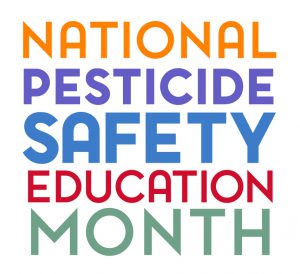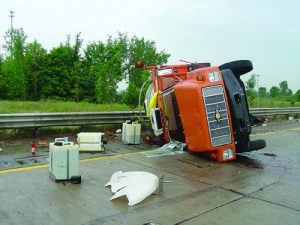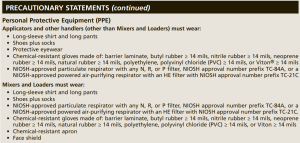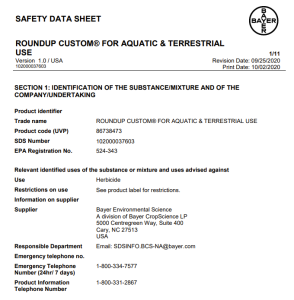 All February we have celebrated National Pesticide Safety Education month, and have discussed PPE (Personal Protective Equipment). Well we have finally come to the last one, It’s Closing Time, and we have a final heads up on PPE. At the end you will hopefully understand that SDS isn’t just a catchy song, but a vital part to knowing Where Do I Find What PPE to Wear?
All February we have celebrated National Pesticide Safety Education month, and have discussed PPE (Personal Protective Equipment). Well we have finally come to the last one, It’s Closing Time, and we have a final heads up on PPE. At the end you will hopefully understand that SDS isn’t just a catchy song, but a vital part to knowing Where Do I Find What PPE to Wear?
I will apologize in advance for all the songs I am going to list, and the bad jokes that will abound, but we have to have a little fun along the way right? I even went so far as to rewrite some of the lyrics to the Safety Dance Song (SDS…bad I know):
“You can read if you want to
Just don’t leave the label behind
Cause if you don’t read
Then you will get
An EPA fine”
So far this month we have covered what makes up PPE, how to care for it, and now we are going to discuss how to determine WHAT you need to wear. The #1 place you can find PPE, and a bunch of other information is….on the LABEL. That link takes you to a previous Pesticide Safety Education Awareness series we did all about the label. Don’t be a Renegade and just wing it, that will lead to Danger. Seriously you need to read the label it keeps you legal and keeps you safe. You will find PPE requirements in the Precautionary statements section of that label. It can be as simple as “avoid contact” or as complex as gloves, self contained breathing apparatus, aprons, face shields, the list can be extensive. No matter WHAT is listed you MUST wear what it tells you to.
On all labels you will find mandatory language (things like MUST, DON’T, NEVER), which means that is enforceable and non-negotiable. You will also find advisory language, which is meant to provide further insight or best management type of practices, BUT it is not required. For example a label might say:
“applicators MUST wear chemical resistant gloves, nitrile gloves are particularly effective”
This means you have to wear gloves and they must be made of chemical resistant materials, sorry no cotton here. They are recommending nitrile, but it is NOT required.
SDS
We still haven’t addressed my awkward musical choice and lyrics from before, just what is SDS. This is a document that brings in a whole other federal agency OSHA (Occupational Health and Safety Administration). As they title implies they are there for safety at work, and to make sure you don’t get Hurt. They require that all chemicals, pesticides included, have an SDS (Safety Data Sheet) to clearly communicate risks associated with that chemical. To make things confusing these SDS will always included PPE, and it will sometimes differ from the label. Which one do I follow? The answer is BOTH…you would follow each one at different parts of your job related to pesticides.
For instance when you are heading from job site to job site, or Driving around with chemical in the vehicle, OSHA and the SDS are critical. Transporting pesticides is NOT part of using them and is not readily covered on the label, so the SDS steps in. Think of the SDS as covering ALL the other risks associated with pesticides that aren’t associated with mixing, loading, and applying pesticides. The label covers when you are actively working with pesticides, the SDS when you are around them at work but not using them.
These SDS are all harmonized now and organized in an identical way with 16 sections of information. To understand how they are organized OSHA has a great write up about each section. It provides toxicity data, which could be useful to first responders in case of exposure, fire hazards, and many other key pieces of information. Where PPE comes into play is when Accidents happen, or when a spill occurs. This is outside the normal use of a pesticide, so in that case you would default to the PPE on the SDS, not the label.


Although this can seem confusing and it’s yet more reading, it really does make sense when you think about what each group does. Labels are part of the EPA process, and regulate how a pesticide is used. So if you are using a pesticide, follow the label. When things go wrong, like a spill, accident, or potential for those things to occur, then OSHA steps in and the SDS applies. When things go right, label, when things go wrong, SDS.
Thank You
We have spent all month discussing PPE because it is one of the most important parts of pesticide safety. However, it is just a part of safety, the most important part of safety is NOT a checklist, its not a pair of gloves, it’s a mindset! You are the most important part of the safety process, are you taking it seriously and staying focused on what needs to be done. So if you fail to read the label, don’t know what an SDS is, and generally fail to pay attention, then we know what the Problem is.
Thank you for joining us this month and staying focused on Pesticide Safety Awareness. I also thank you for allowing me to have a little fun along the way and create what turned out to be a very eclectic playlist for this blog. Clearly I have Too Much Time on My Hands. Thank you for your time and keep reading your labels and staying safe out there.
Click To Subscribe
Source: UF/IFAS Pest Alert
Note: All images and contents are the property of UF/IFAS.






